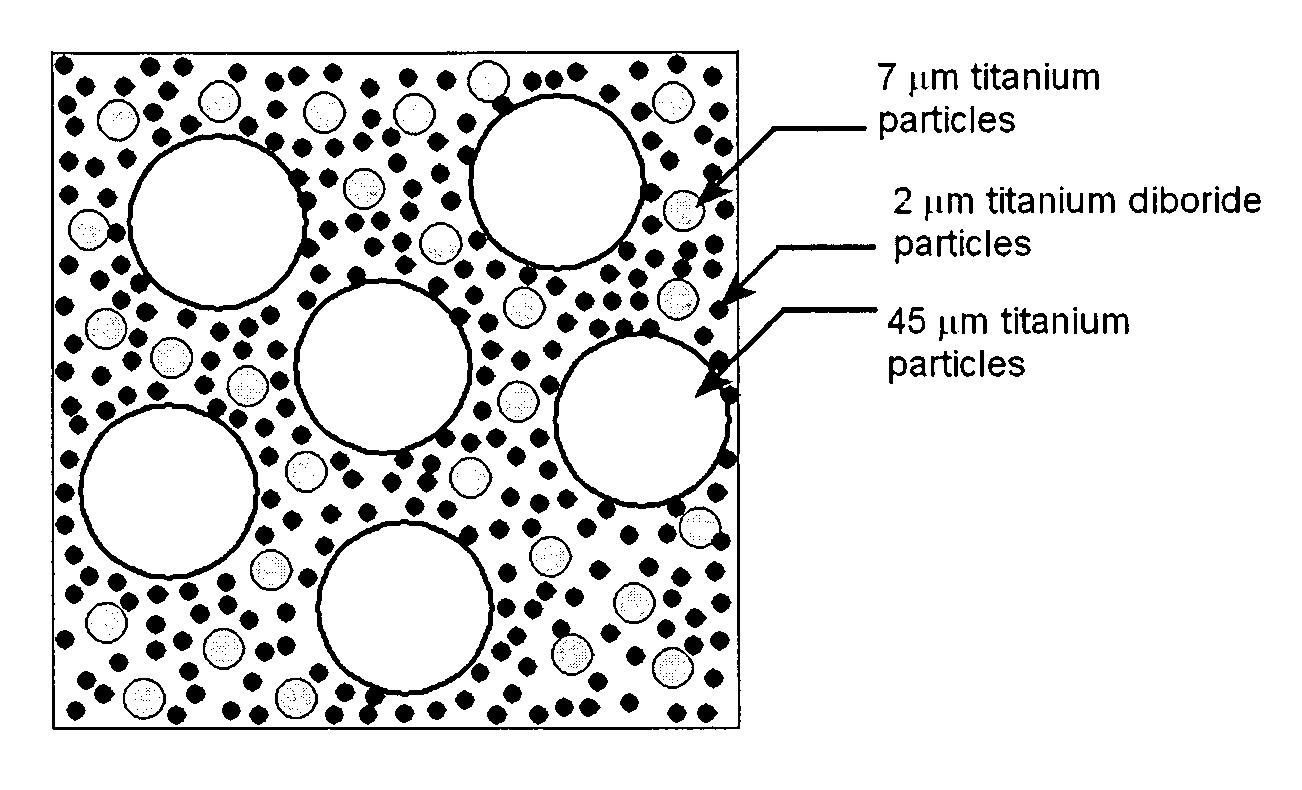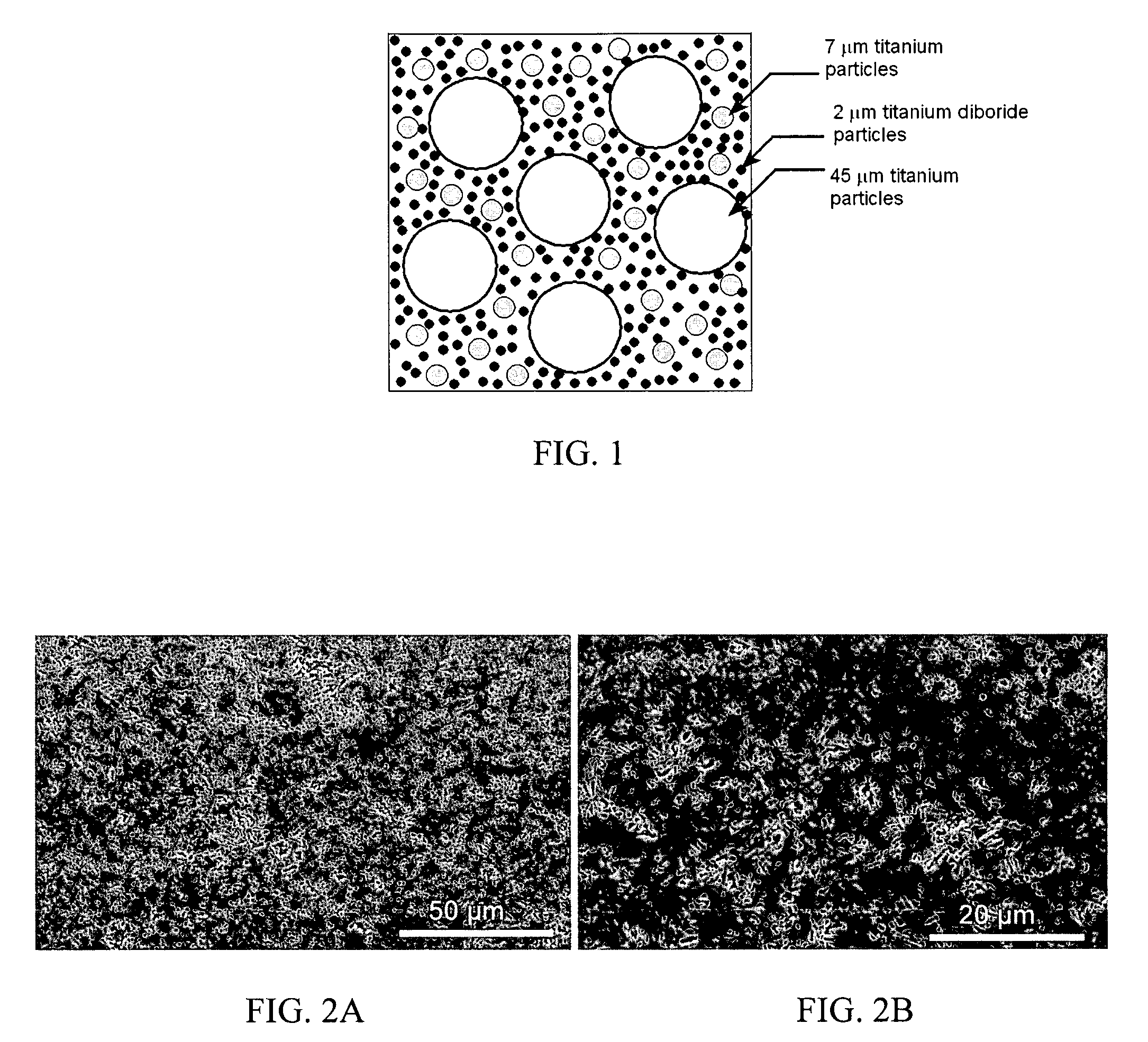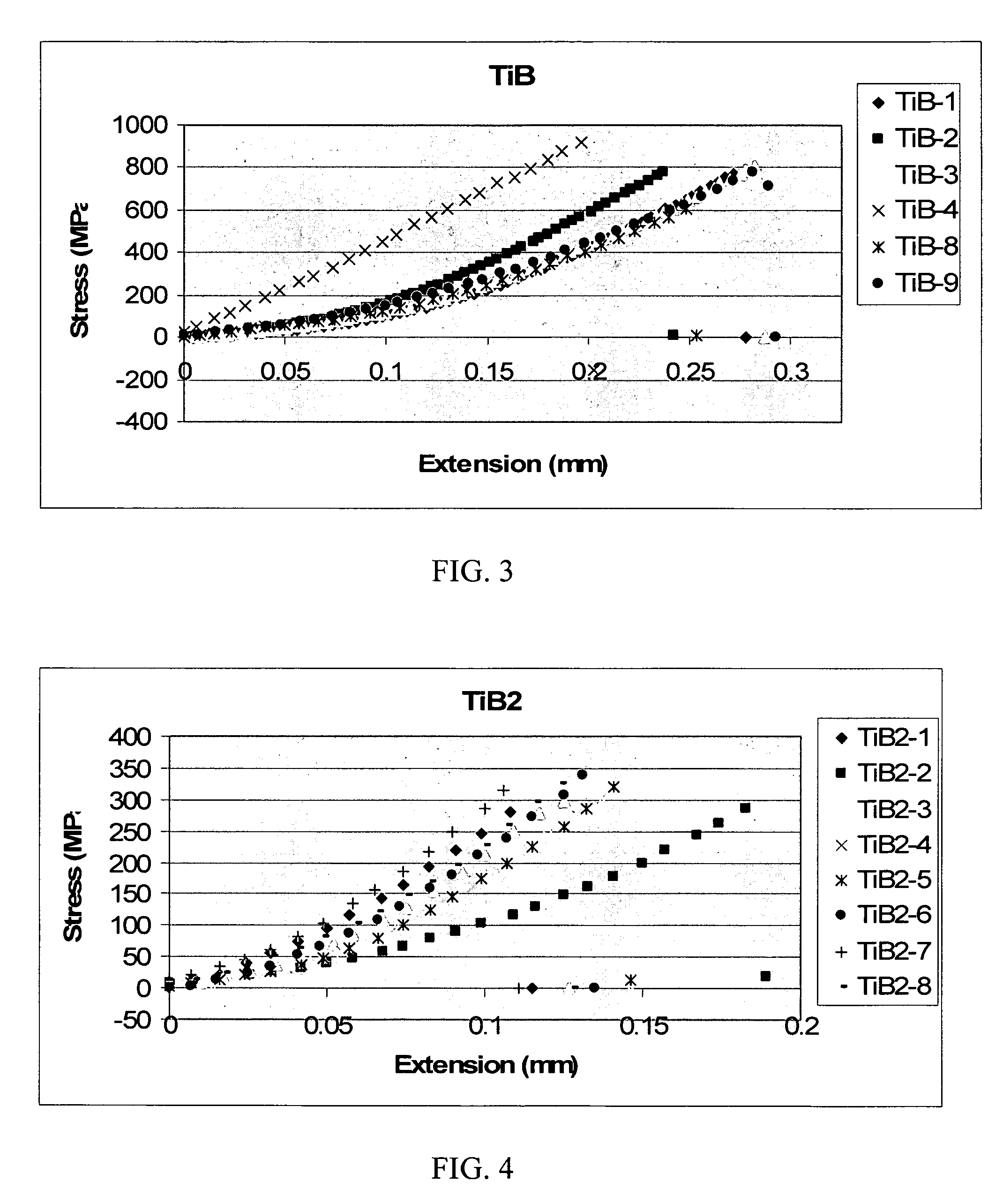Nanostructured titanium monoboride monolithic material and associated methods
a monolithic material and nanostructure technology, applied in the field of hard ceramic materials, can solve the problems of high manufacturing cost, high manufacturing cost, and low availability of borides, and achieve the effects of high strength, high manufacturing cost, and high manufacturing efficiency
- Summary
- Abstract
- Description
- Claims
- Application Information
AI Technical Summary
Benefits of technology
Problems solved by technology
Method used
Image
Examples
example 1
[0058]Preparation
[0059]A nanostructured titanium monoboride was manufactured by carefully controlled reaction sintering of a tri-modal distribution of Ti and TiB2 powders. The relative powder sizes were important in obtaining the desired nanostructure in the final TiB material. A bi-modal titanium powder mixture having an average size of 45 μm and 7 μm and a composition of (wt. %) 0.23 O, 0.02 N, 0.01 C, 0.04 Fe, and 0.024 H and titanium diboride powders having an average size of 2 μm and a composition of (wt. %) 30.3 B, 0.67 Zr, 0.01 C, 0.04 Fe, and 0.024 H were provided. The titanium powder and titanium diboride powders were mixed together at 49 wt % Ti (41±2 wt % of 45 μm size and 9±1 wt % of 7 μm size powder) and 51 wt % TiB2. The powders were then thoroughly blended for 24 hours in a rotary blender with steel balls to ensure homogeneity of the mixture. These powders have a size ratio of 45:7:2, and a packing density of about 90% in the blended state, which was found to be impor...
PUM
| Property | Measurement | Unit |
|---|---|---|
| pressure | aaaaa | aaaaa |
| flexural strength | aaaaa | aaaaa |
| temperatures | aaaaa | aaaaa |
Abstract
Description
Claims
Application Information
 Login to View More
Login to View More - R&D
- Intellectual Property
- Life Sciences
- Materials
- Tech Scout
- Unparalleled Data Quality
- Higher Quality Content
- 60% Fewer Hallucinations
Browse by: Latest US Patents, China's latest patents, Technical Efficacy Thesaurus, Application Domain, Technology Topic, Popular Technical Reports.
© 2025 PatSnap. All rights reserved.Legal|Privacy policy|Modern Slavery Act Transparency Statement|Sitemap|About US| Contact US: help@patsnap.com



